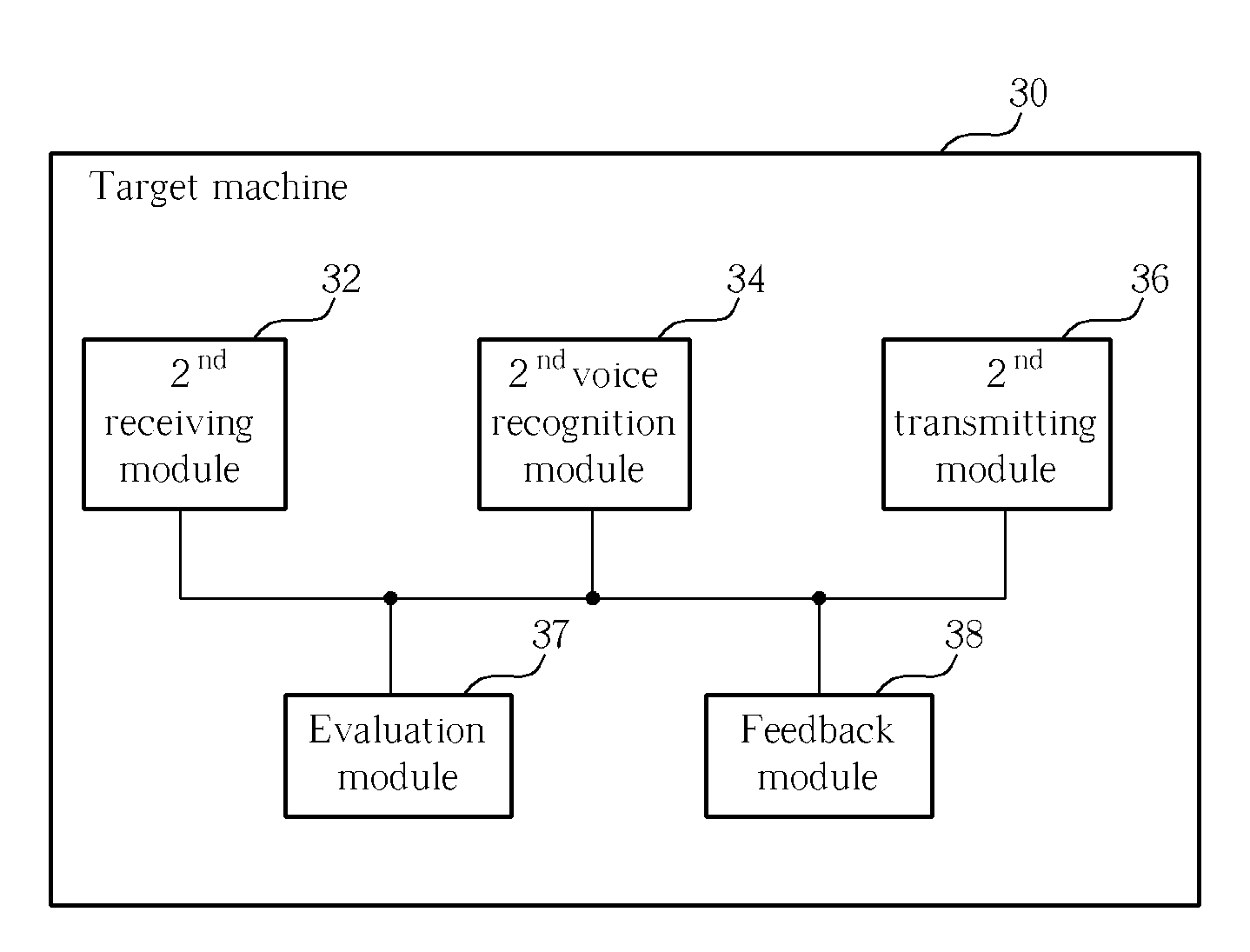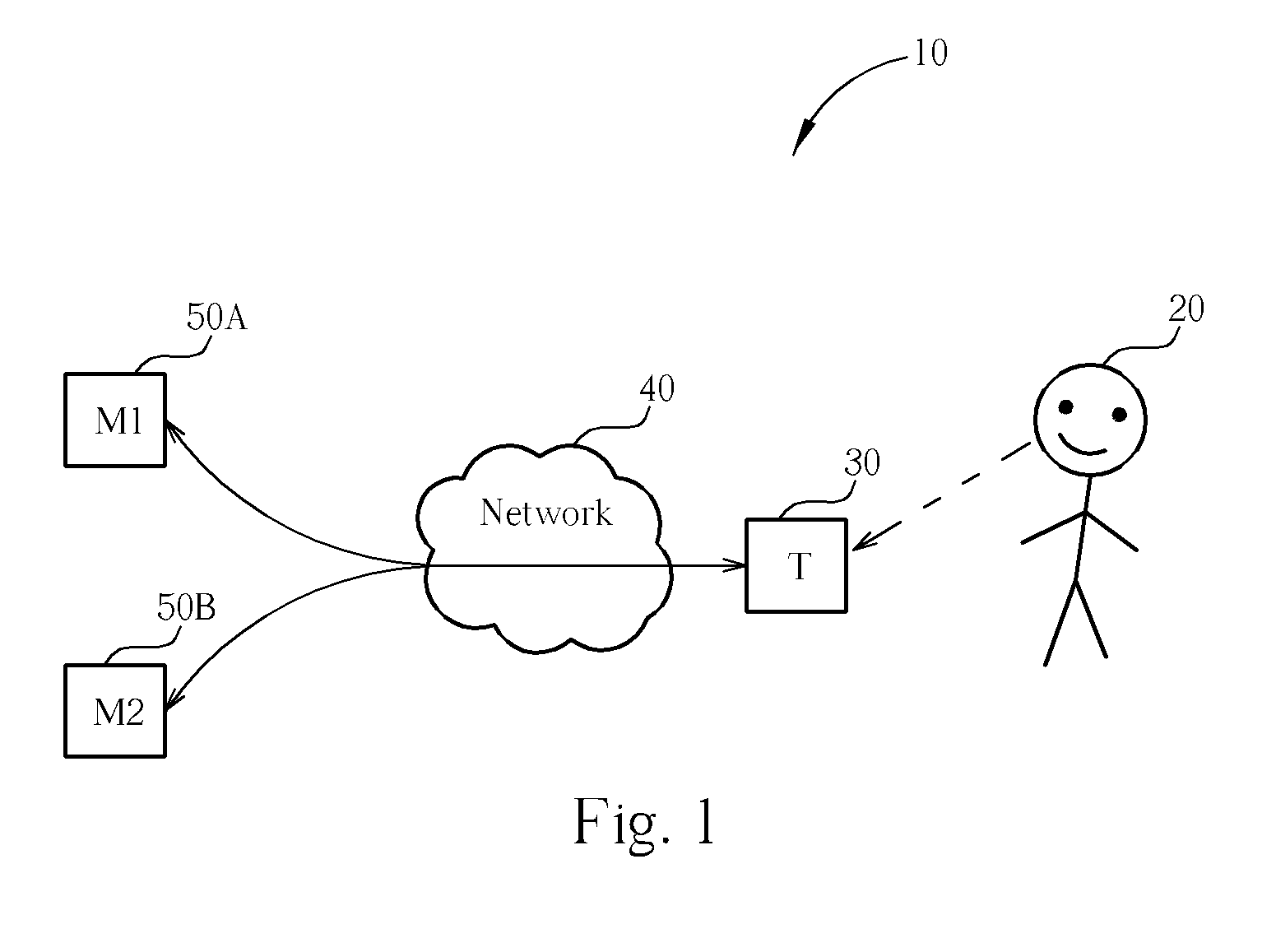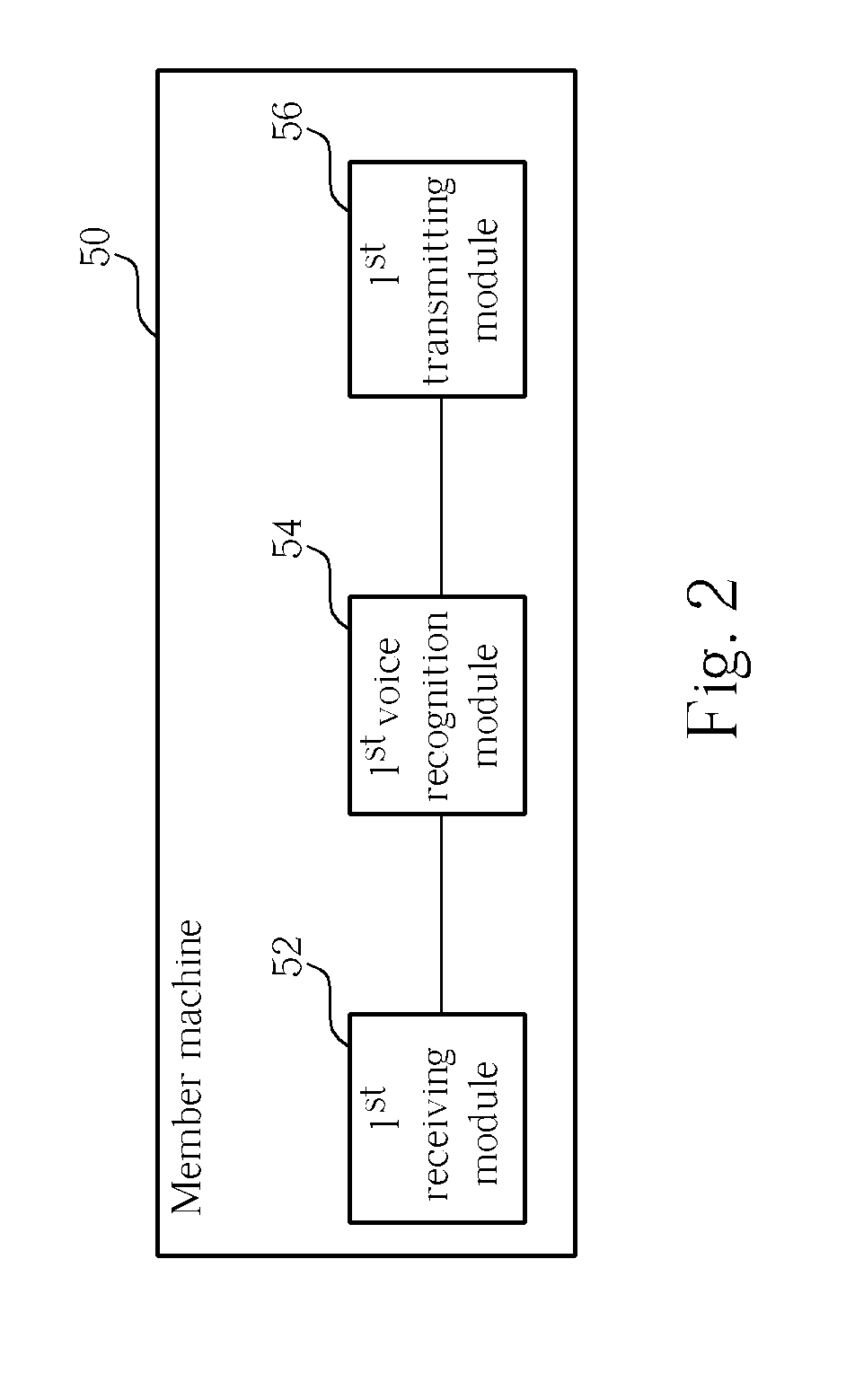Determining voice commands with cooperative voice recognition
- Summary
- Abstract
- Description
- Claims
- Application Information
AI Technical Summary
Benefits of technology
Problems solved by technology
Method used
Image
Examples
Example
[0027]With the second embodiment, the member machines 50A, 50B can be located anywhere so long as they are connected to the network 40. This allows the target machine 30 to take advantage of other computers worldwide that have exceptional computational power, thereby producing a more accurate voice command recognition result.
[0028]In summary, the present invention provides a way for multiple machines to work cooperatively in order to more accurately perform voice command recognition. Member machines having higher processing power can be used to aid the target machine in determining the spoken commands. In addition, the member machines are not limited to any specific location, and can communicate with the target machine through a network.
[0029]Those skilled in the art will readily observe that numerous modifications and alterations of the device and method may be made while retaining the teachings of the invention. Accordingly, the above disclosure should be construed as limited only...
PUM
 Login to View More
Login to View More Abstract
Description
Claims
Application Information
 Login to View More
Login to View More - R&D
- Intellectual Property
- Life Sciences
- Materials
- Tech Scout
- Unparalleled Data Quality
- Higher Quality Content
- 60% Fewer Hallucinations
Browse by: Latest US Patents, China's latest patents, Technical Efficacy Thesaurus, Application Domain, Technology Topic, Popular Technical Reports.
© 2025 PatSnap. All rights reserved.Legal|Privacy policy|Modern Slavery Act Transparency Statement|Sitemap|About US| Contact US: help@patsnap.com



